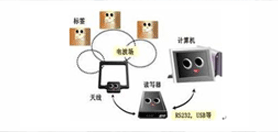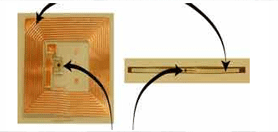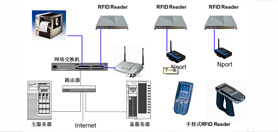RFID (Radio Frequency IDentification), that is, radio frequency identification technology, is an emerging automatic identification technology developed in the 1980s, also known as electronic tags and radio frequency identification. This technology is a technology that uses radio frequency signals to realize contactless information transmission through spatial coupling (alternating magnetic field or electromagnetic field) and achieve the identification purpose through the transmitted information.
RFID technology is based on the principle of information transmission. RFID technology is based on the transformer coupling model (energy transfer and signal transmission between primary and secondary) in the low frequency band, and the space coupling model based on the radar detection target in the high frequency band (radar emits electromagnetic waves After the signal hits the target, it carries the target information and returns to the radar receiver). In 1948, Harry Stockman's "Communications Using Reflected Power" laid the theoretical foundation for radio frequency identification technology.
RFID tags are divided into passive, semi-passive (also called semi-active), and active three types.
Passive passive tags have no internal power supply. The internal integrated circuit is driven by the received electromagnetic waves, which are emitted by the RFID reader. When the tag receives a signal of sufficient strength, it can send data to the reader. These data include not only the ID number (Universally Unique ID), but also the data pre-existing in the EEPROM in the tag.
Passive tags have the advantages of low price, small size, and no need for power supply. The RFID tags currently on the market are mainly passive.

Semi-active type Generally speaking, the antenna of a passive tag has two tasks. First: receiving the electromagnetic waves emitted by the reader to drive the tag IC; second: when the tag returns a signal, it needs to be switched by the impedance of the antenna. In order to produce a change of 0 and 1. The problem is that if you want to have the best return efficiency, the antenna impedance must be designed as "open and short", which will completely reflect the signal and cannot be received by the tag IC. The semi-active tag is to solve this problem. The semi-active type is similar to the passive type, but it has a small battery, and the power can just drive the tag IC, so that the IC is in a working state. The advantage of this is that the antenna can be used as a return signal regardless of the task of receiving electromagnetic waves. Compared with the passive type, the semi-active type has a faster response speed and better efficiency.

The difference between active and passive and semi-passive is that the active tag itself has an internal power supply for supplying the power required by the internal IC to generate external signals. Generally speaking, active tags have a longer reading distance and a larger memory capacity can be used to store some additional information sent by the reader.

RFID technology includes a complete set of information technology infrastructure, including:
Radio frequency identification tags, also known as radio frequency tags and electronic tags, are mainly composed of large-scale integrated circuit chips with identification codes and transceiver antennas. Currently, they are mainly passive, and the electrical energy in use is taken from the radio wave energy received by the antenna; Radio frequency identification reading and writing equipment and the corresponding information service system, such as the network of the inventory management system.
Comparing RFID technology with Barcode technology, the RF category has many advantages, such as:
Can accommodate more capacity. The communication distance is long. It is difficult to copy. Have a higher tolerance for environmental changes. Multiple tags can be read simultaneously.
There are relatively shortcomings, that is, the construction cost is relatively high. However, through the large-scale use of this technology, the production cost can be greatly reduced.
Instrument Guitar Bag,Premium Acoustic Guitar Bag,Waterproof Acoustic Guitar Gig Bag,Waterproof Polyester Guitar Backpack
Dongguan Mingpin Travel Goods Co., Ltd. , https://www.mingpinsuitcase.com
